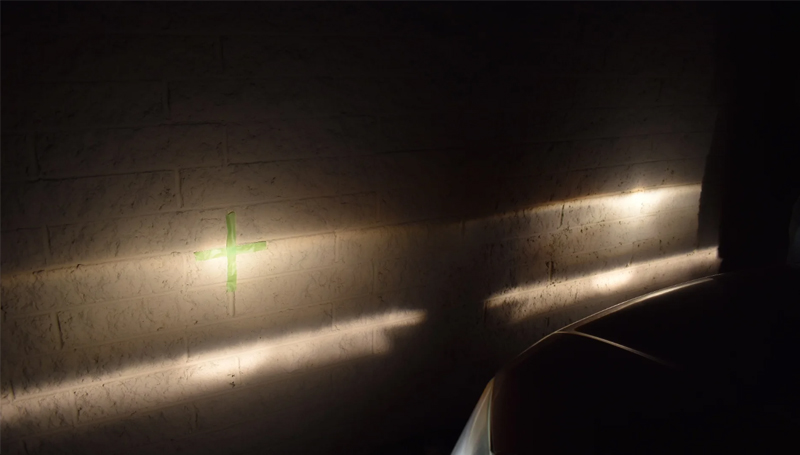Do you constantly have oncoming drivers flash their headlights from high to low at you? In this case, they’re trying to tell you that your headlights are shining into their eyes and temporarily blinding them. Either you have your high beams on, or your low beams aren’t aimed properly.
If you drive down the road and can’t see more than 20 or 30 feet in front of you, the headlights are too low. If all you can see is the night sky or the tops of the trees, the headlights are too high.
So, how to adjust your headlights?
1. Level Your Vehicle
Level your car before adjusting the headlights. Check the tire pressure and remove any excess weight from the cargo area or trunk. Some drivers recommend adjusting the headlights when the gas tank is half-full. It's also a good idea to have someone sit in the driver's seat to mimic the weight that would be present during driving. Park your car on level ground about 10 to 15 feet from a dark garage door or wall with the headlights aimed toward the wall. Next, you can bounce the car on all four corners several times to level out the shocks, then measure the distance from the ground to each headlight to make sure they're level.
2. Measure the Lights
When the car is level, turn on the headlights. Just use the low beams, as high beams or fog lights can give you an inaccurate reading. Use masking tape to mark the headlight beams vertically and horizontally on the wall, which should form a cross. With the taped marks, you can measure the lines to check that they're even. If they're uneven, please note the difference in measurements and then lower the highest center line marker to the same height as the lowest center line marker. Keep in mind that these center lines are no higher than 3.5 feet from the ground.
3. Keep the Car Away From the Wall
Use a tape measure to make sure you back the car exactly 25 feet from the wall, and then turn off the headlights to do the adjustments. Remove the trim ring from each headlight and locate the adjustment screws. Find the marks for both the horizontal adjuster and vertical adjuster. You can then adjust each headlight individually using a screwdriver and the adjustment screws. It is necessary to block out the light from one headlight while adjusting the other using a heavy fabric or object, because having both headlights shining against the wall can make it difficult to distinguish between them.
4. Adjust the Vertical Field
If possible, have an assistant sit in the driver's seat to turn the lights off and on as you make your adjustments. Check the owner's manual first, as various car models usually work differently. In most cases, you can turn the vertical field's screw or bolt clockwise to raises the lights or counterclockwise to lower them. While adjusting the headlights, you need to observe carefully the most intense part of the beam which should hit at or just below the center tape line you created on the wall.
5. Adjust the Horizontal Field
Perform similar operations for the horizontal field as for the vertical one. Simply turn the side screws or bolts until the most intense part of the headlight beam is just to the right of the tape's vertical line. You can then check that the two headlights line up close enough to the tape marks you created on the wall. If necessary, continue to make adjustments until they look right.
6. Take a Road Test
You also need to test the alignment on the road at night after making any headlight adjustments. It is very easy. You just need to take the car for a test drive, note any problem areas, and then readjust as needed.
With the headlights adjusted correctly, you will be able to see better and drive more safely in the dark.
Need to learn more about headlight maintenance? Check here:
6 Tips to Maintain Your Car’s Headlights



